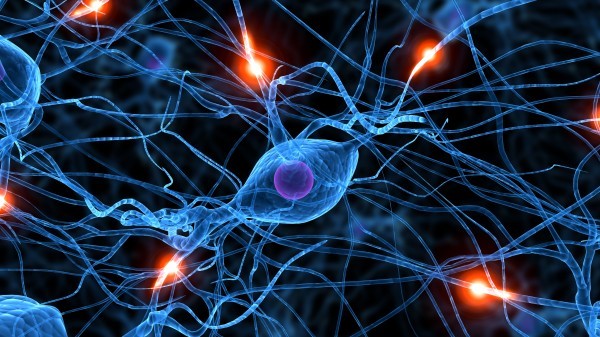Elite academic performance through Frequency Specific Brain TRAINING
By Dr. Lana Morrow, Ph.D., CEO, Think Interfaces Inc. and Dr. Francesco Boccalatte, Ph.D., Dept. of Pathology, NYU Langone Medical Center
Executive function, reading, writing and math success at school
“Let us choose for ourselves our path in life, and let us try to cover that path with flowers.”
Success at school and work takes focus, discipline, planning, attention to details, and fast decision making. Pivotal factors include executive functions and being able to generate new ideas, assess the situation and react in a measured rather than impulsive way. Sustaining attention and focus to details contribute to more successful planning and overall performance (Diamond, Science, Aug 2011).
Studies have documented that the central dopamine system in the brain has an important role in the executive function, as documented by several studies focusing on eye blink and eye shifting rate as effective clinical measures that are strongly related to the executive brain function (Zhang, Intern. Jour. of Psychophysiol. June 2015) A large, representative national sample of 2036 USA students ages 5-17 found a strong correlation between the performance on the Woodcock-Johnson Tests of Achievement–Revised (Woodcock & Johnson, 1989). Strong correlation between complex executive functions and academic achievement varied across ages, but the developmental pattern of the strength of these correlations was remarkably similar for overall math and reading achievement, suggesting a domain-general relation between complex EF and academic achievement (Best et al, Learn Individ. Differ. 2011 Aug; 21(4): 327–336.
Executive functions such as planning, problem solving, decision making, focusing and sustaining attention involve activation of the prefrontal dopaminergic areas with projections to select dopamine receptors. These pathways are involved in modulation of the flow of dopamine, which enables the brain to effectively perform executive functions. In recent years, it has become apparent that pre-frontal cortical executive functions must be considered in terms of a state dependency that is mainly provided by the chemical modulatory systems. In simple terms, the executive processes required to respond optimally to stress (e.g., during an Olympic game run) may be radically different from those required to cope with grief or to stay awake during a boring, though important, class lecture or board meeting (Robbins, Annu Rev Neurosci. 2009; 32: 267–287.)
Dopaminergic activation happens through the activation of a group of 5 different dopamine receptors, located in different areas of the brain. For example, the activation of the D2 dopamine receptor is associated with cognitive functions, and most recent studies have
proven that the dopaminergic receptor D2 is related to effective problem solving under stressful conditions (Zhang et al – Association of DDR2 with insight problem solving – Front Psychol 2016). Therefore, stimulating that specific D2 receptor can selectively increase the performance of the brain in terms of decision-making and task completion.
Decision making and focusing are activities necessary both for executives in a corporate world, and for students when taking a test or attending a lecture. Sustaining focus and attention with greater efficacy and capacity to make accurate decisions is correlated to success and productivity.
DOPAMINE, ATTENTION AND PEAK PERFORMANCE
By Dr. Lana Morrow, Ph.D., CEO, Think Interfaces Inc. and Dr. Francesco Boccalatte, Ph.D., Dept. of Pathology, NYU Langone Medical Center
"HAPPY HORMONE'S" Role in Performing at Our Best
“Once you find that peace, that place of peace and quiet, harmony and confidence, that’s when you start playing your best.”
Peak performance in high functioning individuals and Olympic athletes requires strong focus and an optimal dopamine flow (Filonzi- The potential role of myostatin and neurotransmission genes in elite sport performances - J Biosci. 2015). The two are related and there is considerable scientific evidence that dopamine plays essential roles in attention and executive functioning. Attention is related to the frontal and prefrontal areas in the brain, containing specific areas known for dopamine modulation. Planning and problem solving involve activation of the prefrontal dopaminergic areas with projections to select Dopamine receptors. These pathways are involved in intentional control of movement, as well as emotion and rewards. Dopamine is a major neurotransmitter in the human brain, involved in cognitive attention, motivation, sleeping patterns, control of coordinated movements and it is essential in the brain reward system (Mardsen - Dopamine, the rewarding years - Br J Pharmacol 2006). The action of dopamine occurs via the activation of a family of 5 different dopamine receptors situated in different areas of the brain. In particular, the activation of of the D4 and D2 dopamine receptors is associated with cognitive functions and personality. Recent studies have demonstrated that the dopaminergic receptor D2 is associated with effective problem solving, especially under stressful conditions (Zhang et al et al - Association of DDR2 with insight problem solving -Front Psychol 2016). This entails that a stimulation of these receptors can increase the performance of the brain in terms of decision-making and task completion. Planning and task execution are activities necessary in most situations, whether in the classroom when taking a test, or on the sports field, and even extending to demanding, high- level corporate jobs. When we can use our optimal levels of dopamine and be in the flow, we are happier and perform at our best.







